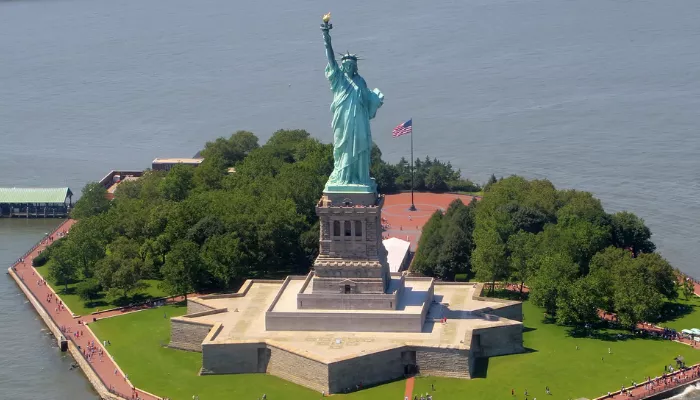
Firstly, it is necessary to make it clear that the construction of the Statue of Liberty was a way for France to give a gift to America. Therefore, Discover the curious history of the Statue of Liberty. In reality, the statue was the work of a renowned statue maker known as Frédéric Auguste Bartholdi.
Therefore, through confessions in his letters and diaries, Bartholdi reported what his incredible journey across America had been like. As well as exploring unique and exotic locations in order to gain support. However, after several attempts, he realized that he would not obtain financial support from any government. So, he decided to look for funds to build the Statue.
Later, he started doing shows in Paris and charging for it. At these shows, people paid to see a statue being built. Furthermore, even though he carried out the construction in a dirty and dusty workshop, he achieved some feats. Like, selling souvenirs and asking the French government for permission to run a national lottery.

However, Bartholdi's initial intention was not to create the statue's design to be built in America. Firstly, as a young man, his visit to Egypt left him extremely delighted to have a project that had been started to dig a canal connecting the Red Sea and the Mediterranean.
So, thinking about it, in 1867, he couldn't pass up the opportunity to meet at the Paris world's fair with the leader of Egypt at the time. With that, he made the proposal, to create a work as wonderful as the other famous works in Egypt.
Therefore, his project was about a woman with a lamp in her hand and a very loose dress. Initially, the idea was that this statue would be used as a lighthouse at the beginning of the Suez Canal. However, after a while, this agreement ended up not working out, and that was when Bartholdi left for America in search of carrying out his project.
Years later, upon its release in October 1886, several groups fighting for women's scarce rights joined together. With this, they protested against the fact that an immense female image was exposed with the intention of representing freedom. The revolt was the fact that the reality was very different. Because, at the same time, women didn't even have the right to vote.
For this reason, only a few women were present at the inauguration. That is, relatives and wives of those involved. Furthermore, all women at that time could do was protest against the statue.
Therefore, women's rights defenders managed to rent a boat in order to travel around the island and protest while the inauguration took place. Despite not being able to be heard because of the noise of cannon fire and whistles, they continued to make their protest speeches.
Thus, when finishing the statue, Bartholdi suggested that the statue be covered in gold. However, he intended to leave the statue visible at dusk. However, the difficulty of raising enough money to get it up and running was taken into account.
Obviously no one went ahead with the idea of covering a statue of that size with gold. Furthermore, the original idea of the statue was that it would be a giant lighthouse, so that it would have some use and thus obtain government funds.
However, after it was built, the idea of lighting it like a lighthouse was not successful. Not to mention that the location wasn't one of the best either, which caused Bartholdi some frustration. Therefore, it took him a while to accept that the statue apparently had no purpose.
So, to be clear, the Statue of Liberty was a gift that France gave to the United States of America. Although the present was 10 years late, the celebration was the centennial of US Independence. This fact happened in 1876.
In this way, the United States won a dispute against England. So, for this reason he received this gigantic work as a gift in 1886, from France.